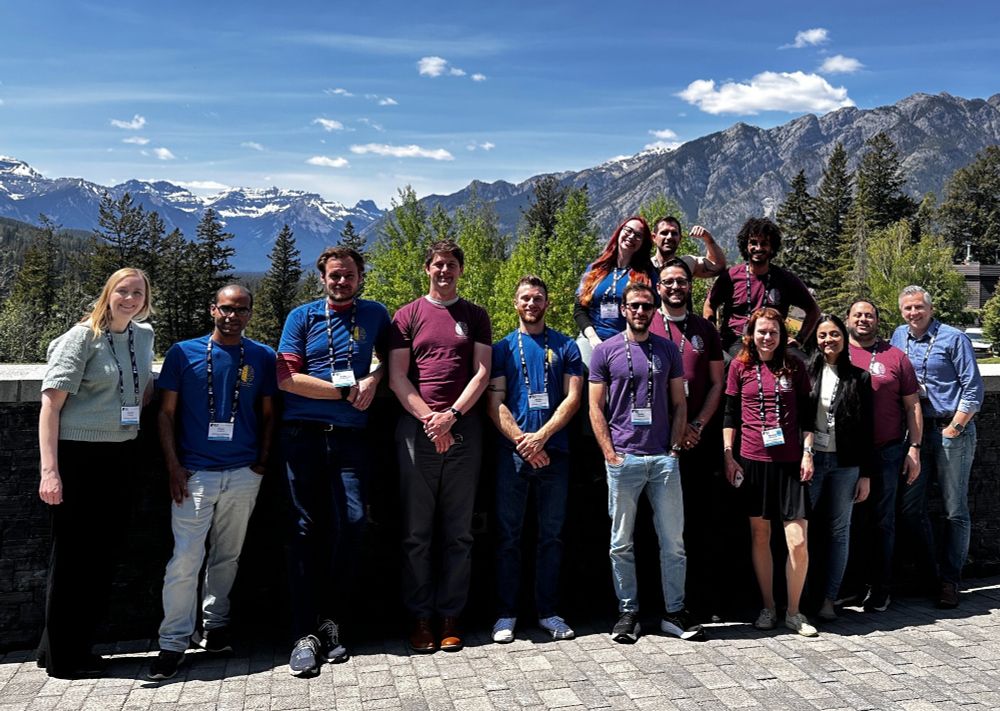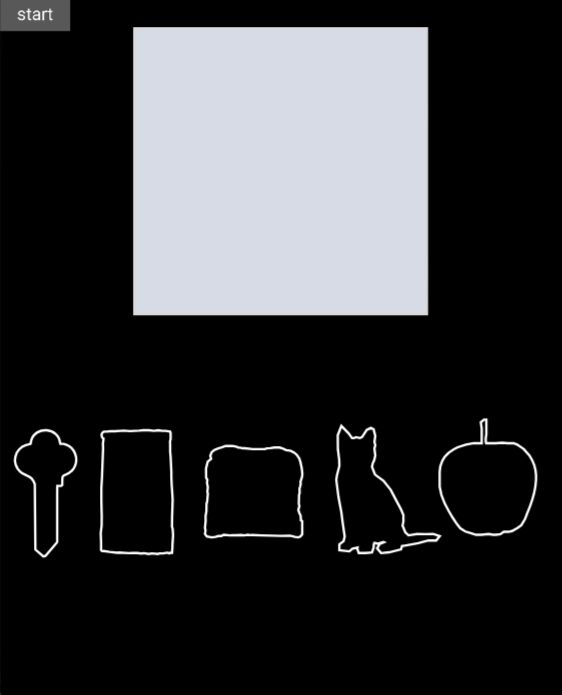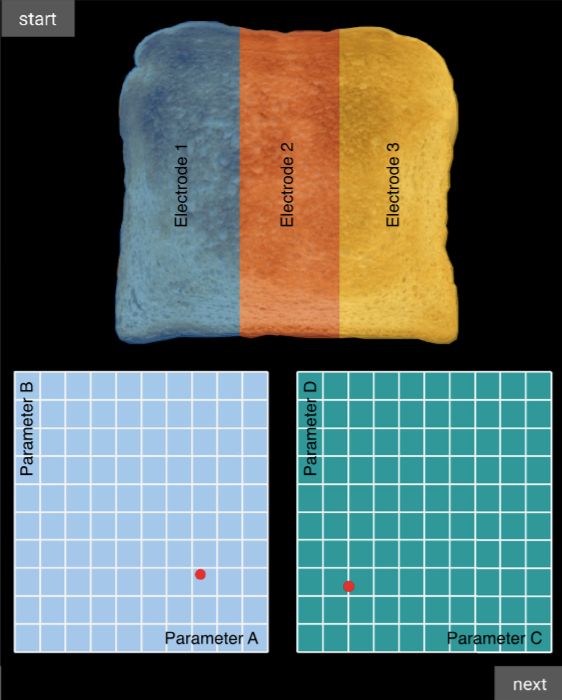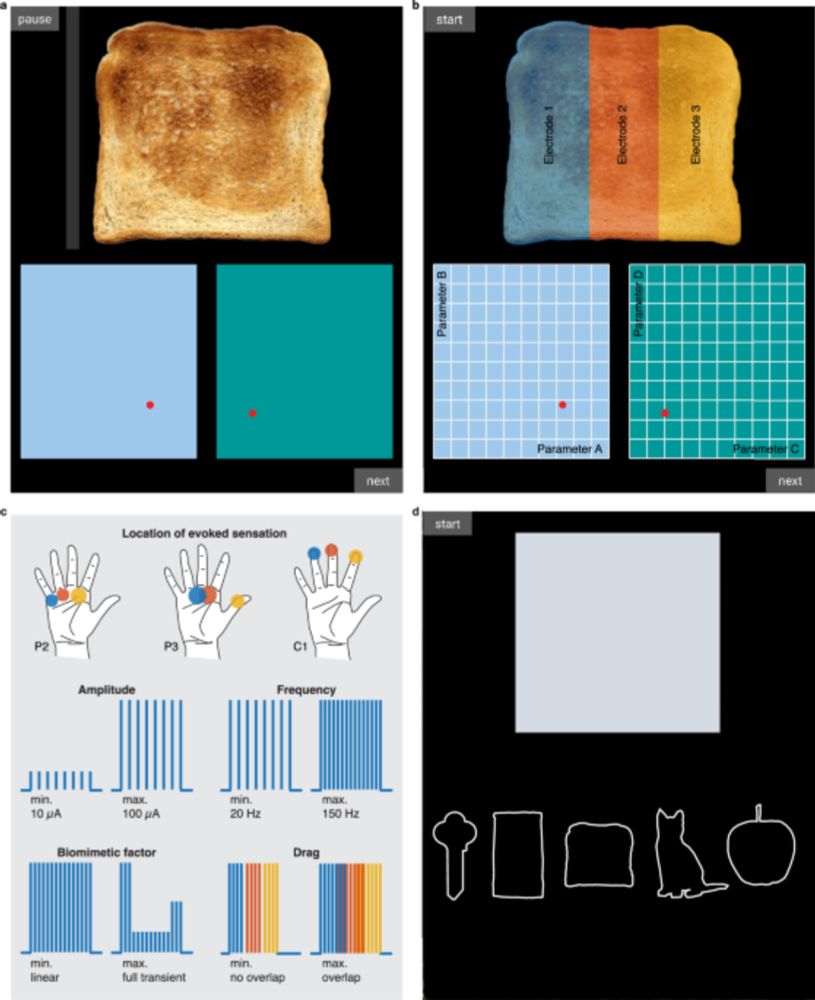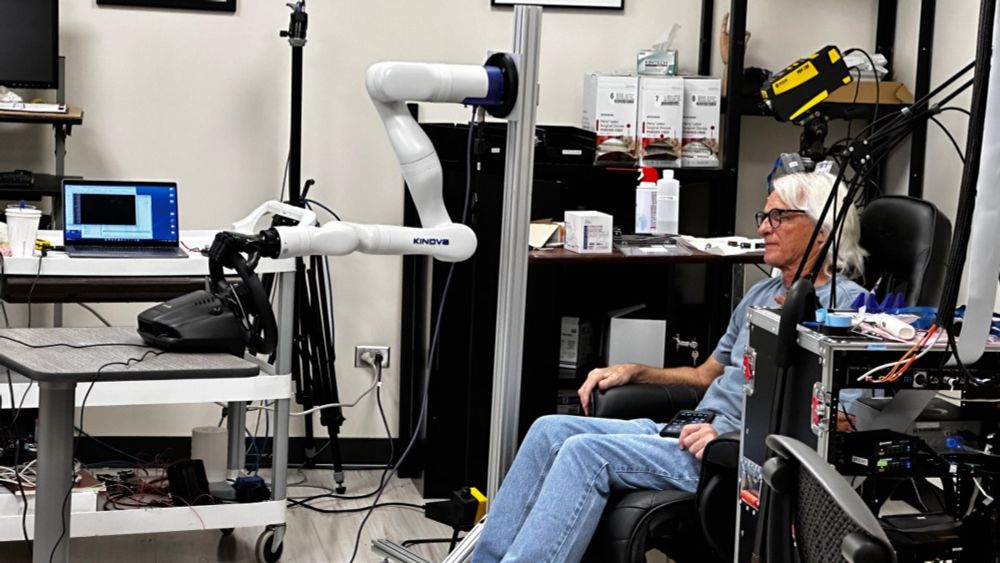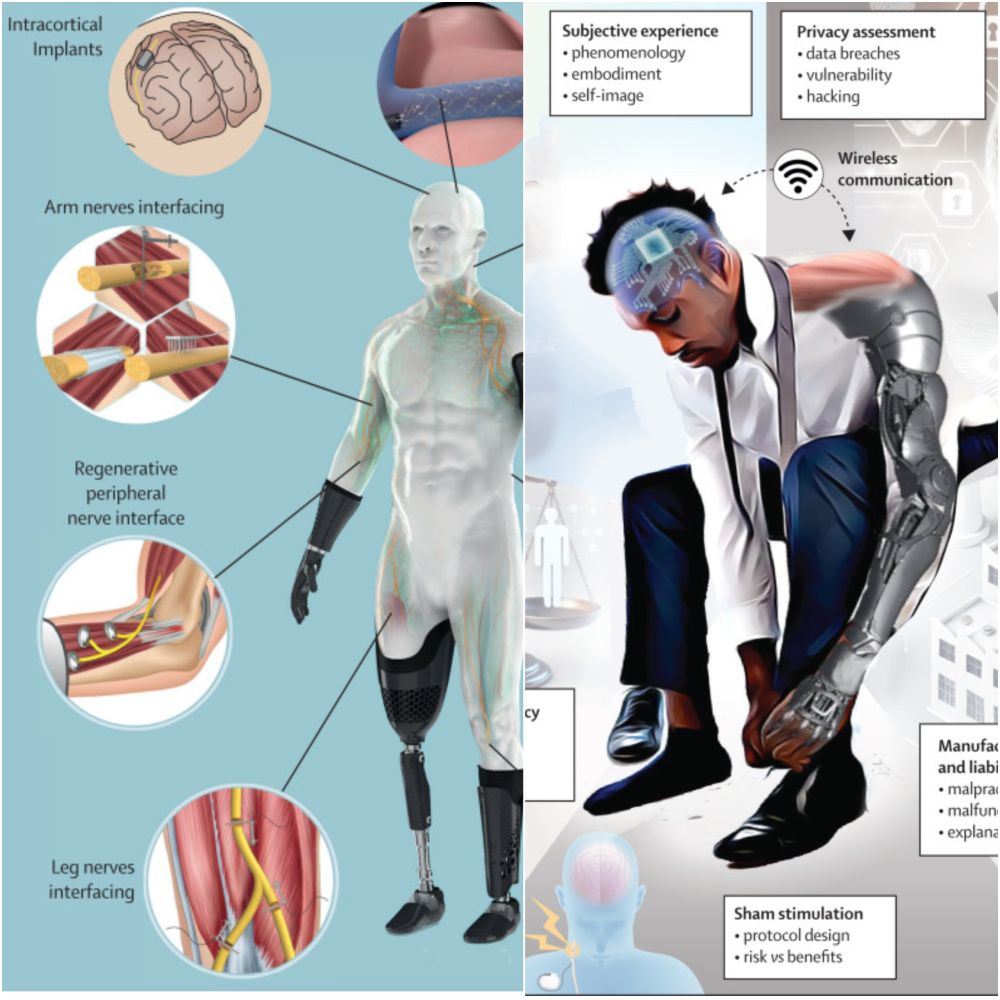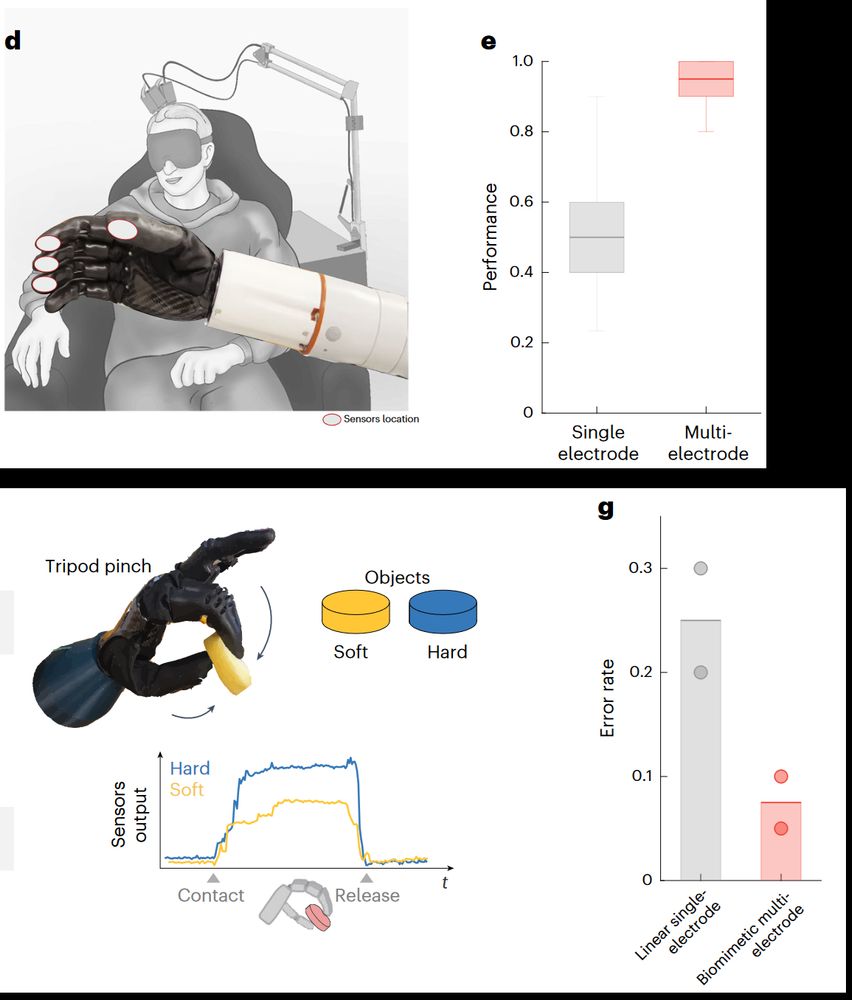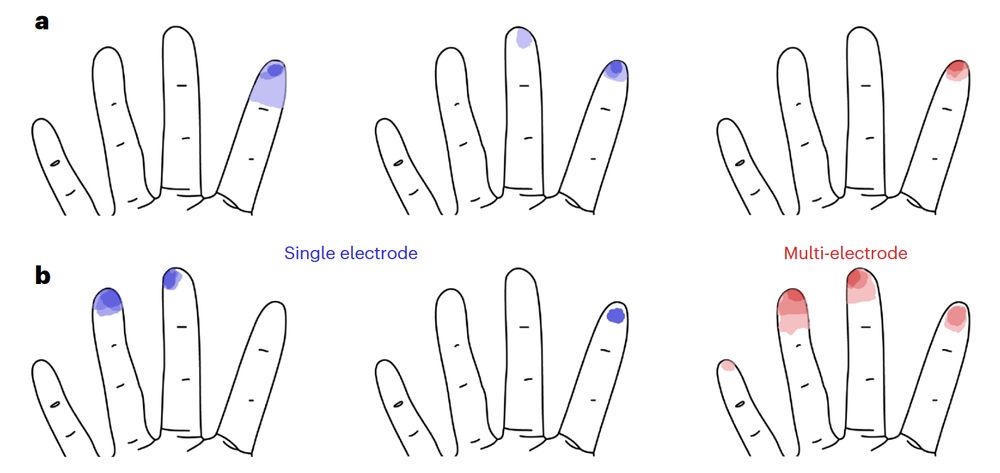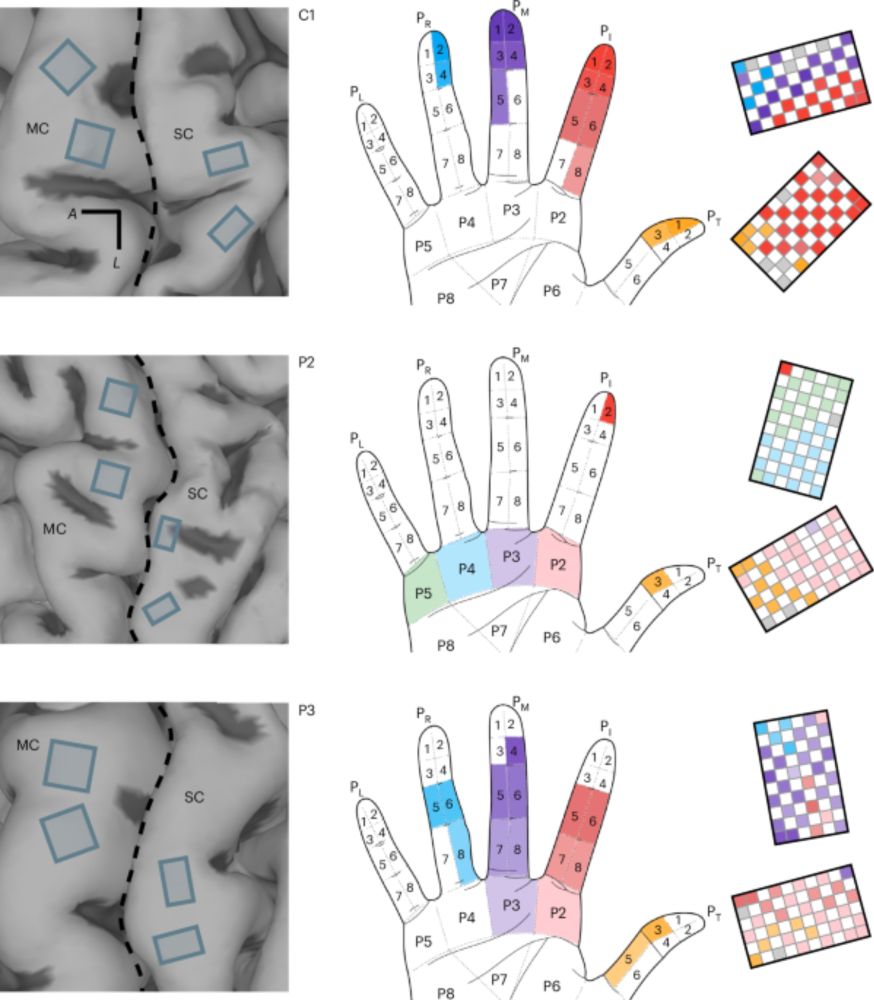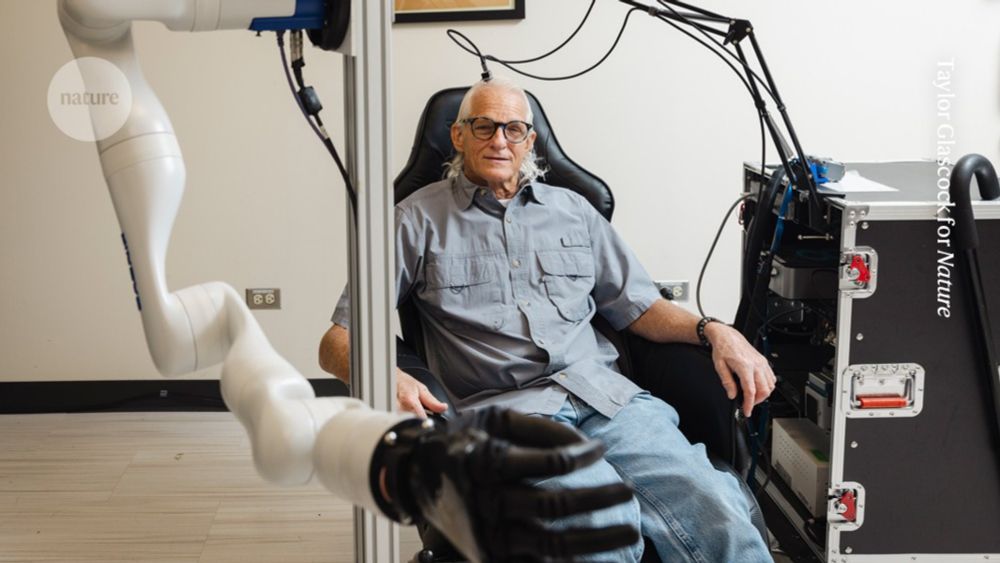Cortical Bionics Research Group
@corticalbionics.bsky.social
230 followers
31 following
16 posts
Collaboration between University of Pittsburgh, University of Chicago and Northwestern researchers to develop a brain-computer interface for prosthetic arm and hand control with sensory feedback.
Posts
Media
Videos
Starter Packs
Reposted by Cortical Bionics Research Group
Reposted by Cortical Bionics Research Group
Reposted by Cortical Bionics Research Group
Reposted by Cortical Bionics Research Group
Reposted by Cortical Bionics Research Group
Reposted by Cortical Bionics Research Group
Reposted by Cortical Bionics Research Group
John Downey
@johndowney.bsky.social
· Feb 29
Reposted by Cortical Bionics Research Group
John Downey
@johndowney.bsky.social
· Nov 10
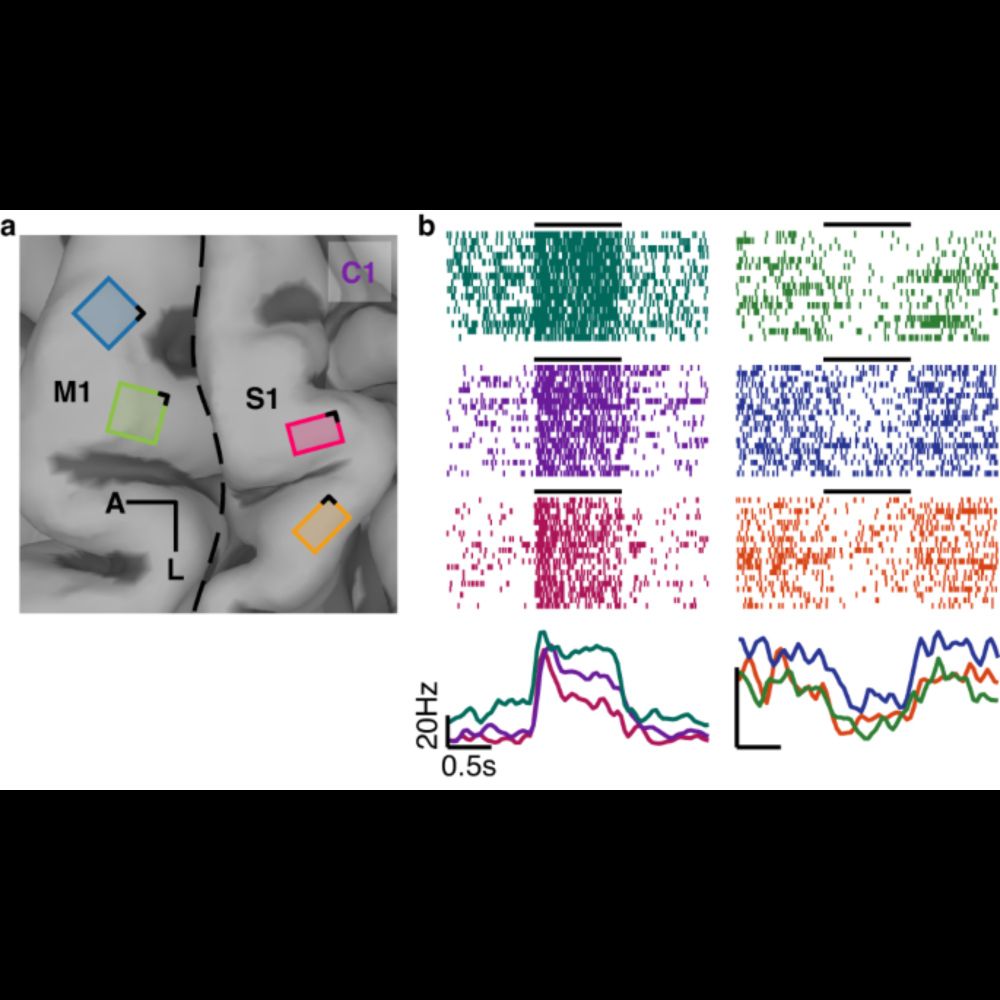
Microstimulation of human somatosensory cortex evokes task-dependent, spatially patterned responses ...
Here the authors record the responses evoked in the hand and arm representations of M1 during intracortical microstimulation in the hand representation of S1, and show somatotopically organized connec...
www.nature.com



